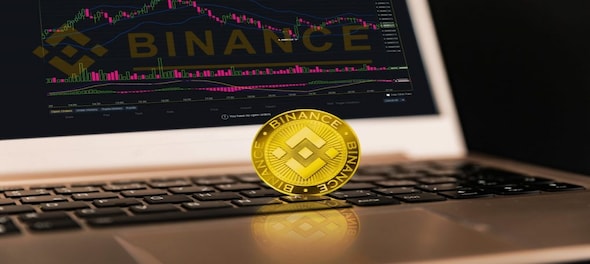
The past 48 hours have been more turbulent than usual, even by crypto standards. Scars from the Luna, Celsius, and 3AC crashes hadn't completely healed when we faced the threat of another crypto exchange, FTX, going down due to sketchy finances and rumours of insolvency.
FTX's native token, FTT, has plummeted nearly 70 percent in the last 24 hours, dragging the entire crypto market along with it. Things have somewhat stabilised after Binance announced that it would purchase the beleaguered crypto exchange. However, the event has caused investors a world of pain and has built a deep mistrust within the community.
To remedy the situation, Binance CEO Changpeng Zhao (CZ) announced a new audit system that uses Merkle trees and allows for a transparent verification of user holdings. This initiative is called the proof-of-reserve fund, and it has quickly garnered the support of investors and high-profile personalities from within the industry.
"All crypto exchanges should do Merkle-tree proof-of-reserves. Banks run on fractional reserves. Crypto exchanges should not. @Binance will start to do proof-of-reserves soon. Full transparency," read CZ's announcement tweet.
But what is a proof-of-reserve, and how does it work?
Generally speaking, an independent third party usually conducts a proof-of-reserve audit to ensure the custodian's assets are intact and stored as claimed. CZ aims to implement a similar mechanism but plans to improve it using Merkle trees. Put simply, a Merkle tree is a data structuring method commonly used in computer science applications. In blockchains like Bitcoin, Merkle trees enable data to be stored and processed more efficiently and securely.
In the case of a centralised crypto exchange (CEX), the records of every user's assets are stored in centralised databases. Using Merkle trees will enable exchanges to store each user account's details more efficiently and securely. A third party can then audit these records to verify all the users' holdings.
Binance's proof-of-reserve garners widespread support
The FTX-Binance saga proves that even the biggest entities can fail and fall hard. Moreover, such events take the community by surprise as it is not privy to the money moves being executed behind closed doors. Therefore, the transparency of CZ's proposed proof-of-reserves is being widely accepted by investors and high-profile crypto entrepreneurs.
"It is clear that cryptographically proving the solvency of trading venues and financial institutions is becoming the new industry standard. Proof of Reserves is a great example of a cryptographically guaranteed financial world that starts in crypto going on to mainstream finance," said Sergey Nazarov, CEO of Chainlink.
The move has also got other crypto exchanges looking to adopt similar systems. For instance, another renowned crypto exchange, OKX, is also planning to introduce a Merkle tree-based Proof-of-Reserves audit system. The exchange took to Twitter last night to announce this new auditing mechanism, describing it as an "important step" in establishing "baseline trust" in the industry.
Following the announcement, five more exchanges — KuCoin, Huobi, Poloniex, Gate.io, and Bitget — have also announced that they will publish Merkle tree reserve certificates to increase transparency.
However, not everyone is convinced by the idea. "The issue is that CEXs *can't* do proof of reserves. So what if you show a wallet with $20B? How do you know the sum of user balances isn't $30B? How do you know if the entity has outstanding loans? How do you know what contracts they've entered into?" said Antonio Juliano, founder of crypto derivatives trading platform dYdX.
Binance tops up its SAFU fund
Effective or not, the proof-of-reserve fund is not the only measure Binance has taken to safeguard investor interests. Back in July 2018, Binance established the Secure Asset Fund for Users (SAFU), an emergency insurance fund that is designed to protect user interest in case of a sudden crash or insolvency. This fund comprises various cryptocurrencies, including BNB, BUSD, and BTC and is usually valued at around $1 billion, depending on market valuations.
However, with the prices of most cryptocurrencies on a downward spiral, the value of Binance's SAFU funds dipped momentarily. Not one to leave things to chance, CZ sprang into action, depositing additional funds to maintain SAFU's $1 billion valuation. "To adjust to recent price fluctuations, #Binance has topped up the #SAFU insurance fund to $1 billion USD equivalent again," said CZ in a tweet.
Conclusion
A crypto exchange only works when people trust the platform enough to put their hard-earned on the line. However, all the black swan events that occurred this year have clouded the judgement of investors. Keeping this in mind, initiatives like the proof-of-reserve fund and SAFU offer an ideal way to win back investors' trust. However, it remains to be seen just how effective these initiatives will be.
Check out our in-depth Market Coverage, Business News & get real-time Stock Market Updates on CNBC-TV18. Also, Watch our channels CNBC-TV18, CNBC Awaaz and CNBC Bajar Live on-the-go!


Lok Sabha Election Phase 2: Experts decode the key trends and issues in key battleground states
Apr 26, 2024 11:53 PM
2024 Lok Sabha Election | Which way the wind blows in the second phase
Apr 26, 2024 6:09 PM

